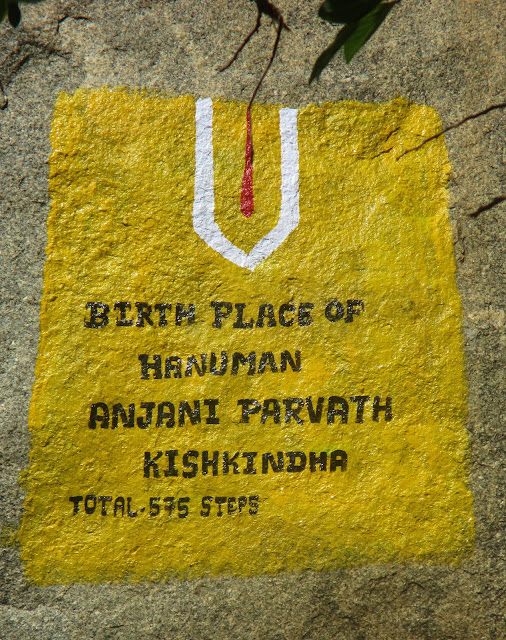
Hampi is inundated with physical sites and buildings which represent and reflect mythological stories
In ancient times Hampi was known as Pampa Kshetra. As always in India, ancient history, mythology and religious rituals are intertwined into incredibly complex liturgies.
For Hampi it’s the story of Pampadevi, daughter of Brahma who conducted a deep meditation by a sacred pond in order to attract Lord Shiva, they were married on the banks of the nearby river which became known as the Pampa, subsequently the Tungabhadra.
Pampa Sarovara is near Anegundi, it is the sacred site where Pampadevi meditated, it is held in equal esteem with the Ganges and attracts many pilgrims. Today the sarovara, a large pond, has some ramshackle but picturesque small temples and rest houses for pilgrims and sadhus, they are provided with food under a huge old Neem tree by the water. We were welcomed by the sadhus who showed us some treasures, two examples of Lord Shiva’s footprints, tiny baby feet imprints decorated with flowers and a less sacred artefact, an amazing percussion machine for temple ceremonies which made a hell of a racket when it was connected by poking two bare wires into an antique socket.
The Hampi area was also known as Kishkinda mentioned in the Ramayana as the monkey kingdom of Hanuman who helped Ram and Lakshman with their search for Sita who was abducted by Ravana and taken to Lanka.
Anjanadri hill is recognized as the birthplace of Hanuman. A long climb through the rock strewn hillside on a path made with 575 steps leads to the temple dedicated to Hanuman where the monkeys almost seem to be standing guard while pilgrims pay homage.
The views of the Tungabhadra river are sensational and certainly worth the climb.
The views of the Tungabhadra river are sensational and certainly worth the climb.



























No comments:
Post a Comment
Follow the latest news from Finca al-manzil- What to do and see in Extremadura and Beyond.............